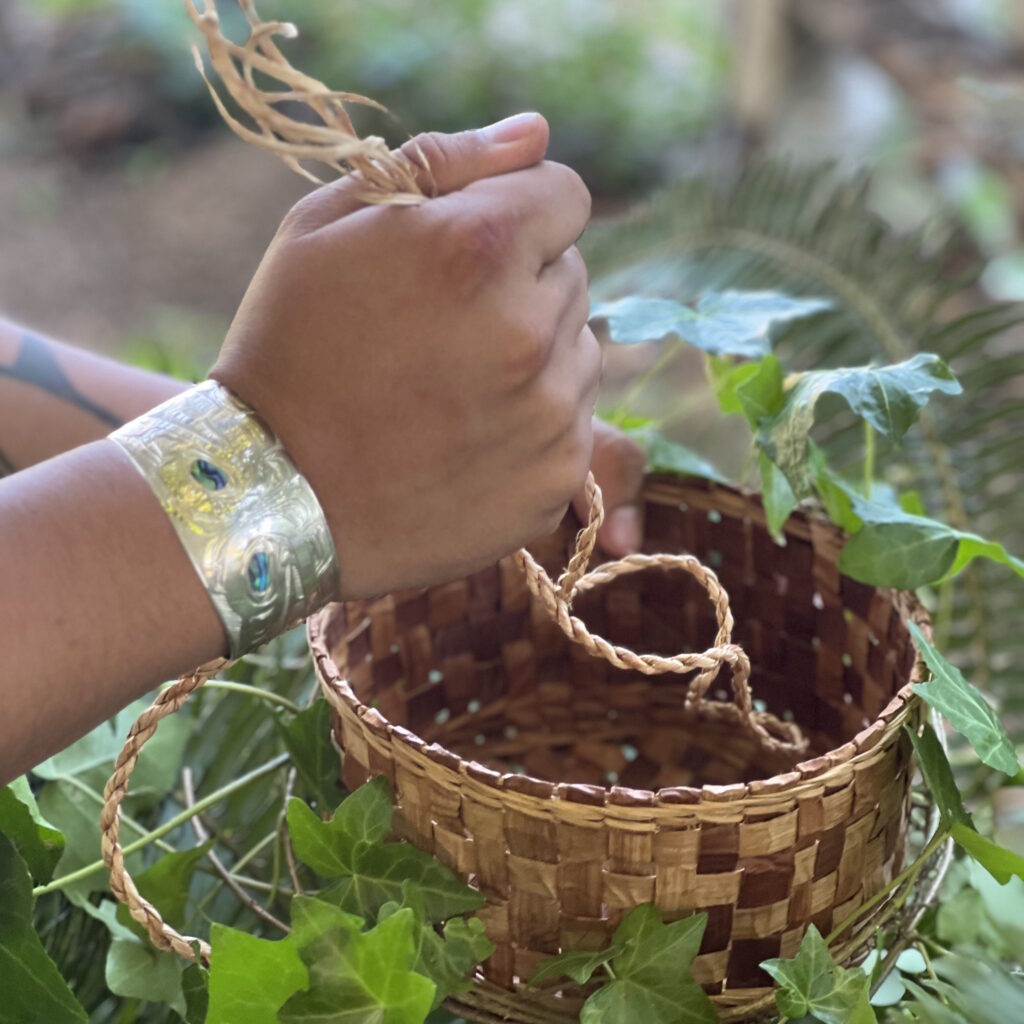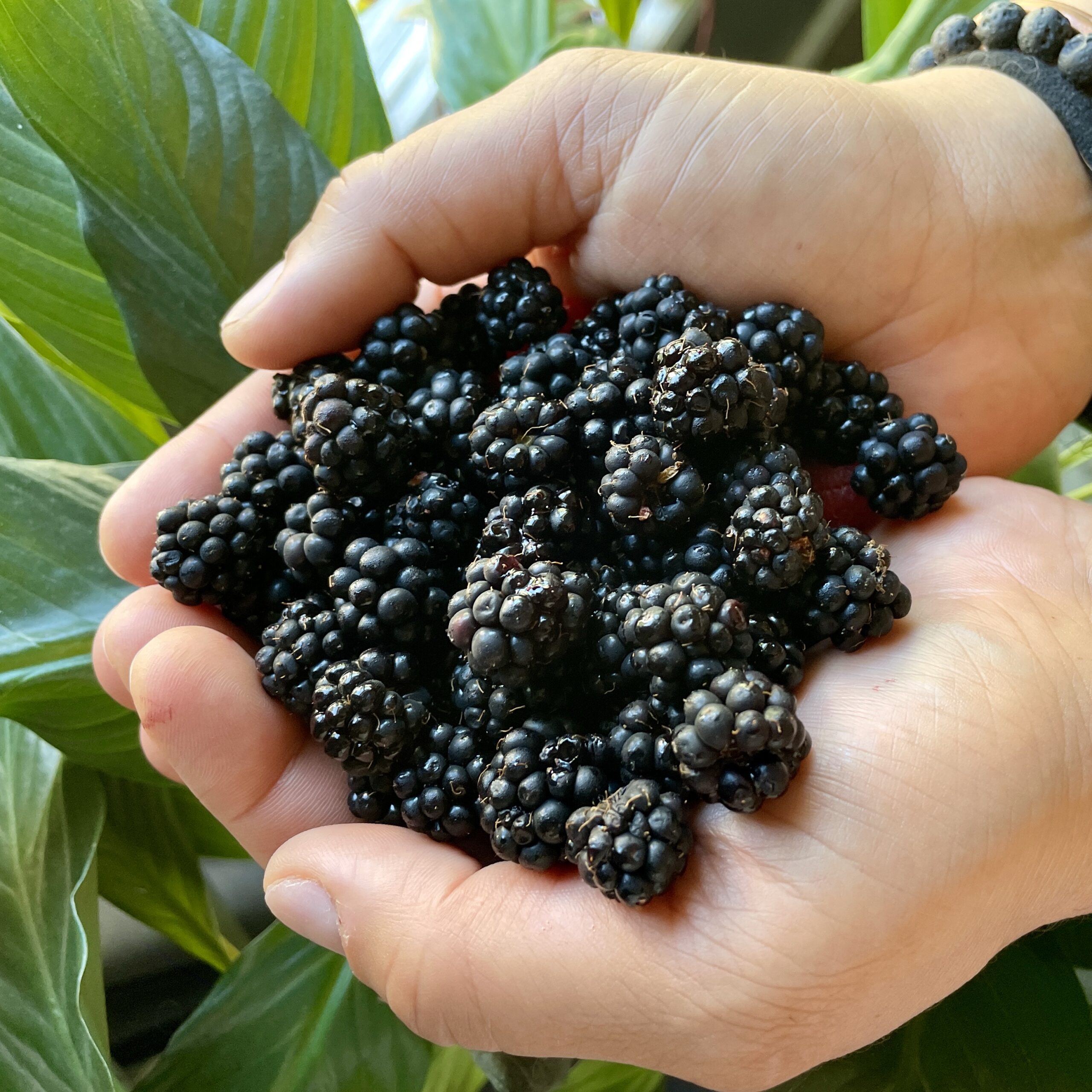Rooted in Respect: Rethinking Our Relationship With Plants
Backyard Habitat is committed to fostering a more inclusive and respectful approach to environmental stewardship, including the language we use to talk about plants.
For many years, the term “invasive” has been the go-to descriptor for non-native plants that disrupt our local ecosystem. While managing these plants remains a key part of our program to support biodiverse, native ecosystems, we have received valuable feedback over the years that the word “invasive” carries negative connotations for plants and can also harmfully affect community members who have heard this term used towards people.
This feedback aligns with the wisdom of Indigenous communities, who have long taught that no plants are inherently bad. Many “invasive” plants have been intentionally introduced to our ecosystem for food, medicine, and aesthetics, only to be displaced, unintentionally disrupting our ecosystem and the native plant populations that thrive here.

This has been a long-time conversation both within our program and in the local environmental sector. We realize we’ve been stuck trying to change the specific word(s), but that the story of how we think and talk about plants is what needs to change instead. Internal and community feedback have prompted our program to reassess how we think and talk about plants. Our staff have committed to learning and aligning ourselves with a more culturally accessible approach to our work. Indigenous program staff have helped us center Indigenous Ecological Teachings in our conversations as a team. We recognize that we have been long overdue in changing how we talk about plants as a program and are dedicated to evolving our language accordingly, guided by the stewards of this land who have been here since time immemorial.
Why This Matters
By shifting our language, we hope to achieve the following:
- Create a More Inclusive Program: Words have power, and more respectful language fosters a more inclusive dialogue about environmental stewardship and conservation.
- Knowledge is Power: This isn’t a new concept, and our program strives to deepen our understanding of and promote both forms of knowledge from Western conservation and Traditional Ecological Indigenous Knowledge.
Our shift in language is an evolving process. While program materials currently use the term “invasive,” we’ll be working on shifting materials to use a mix of terms that are more descriptive, including:
- Plant relatives
- Displaced plants
- Plants we recommend removing
- Ecologically disruptive plants
- Plants that shade out native plants
What Can You Do?
While we still recommend removing certain plants as part of your habitat-building process, before you do so…
- Slow down. Restoration work is a slow and intentional process. Changes do not need to be made overnight.
- Ask yourself, what is your relationship with this plant?
- Learn to connect with all plants. Get to know both native and introduced species. Observe the roles that non-native plants play in your space, and develop an appreciation for their contribution to the wider ecosystem.

- Notice what value these plants provide. Plan for slow successional processes. Bring in native plants that provide similar functions for the environment, plant a few, let them establish, remove some of the non-native plants, and take time to complete the transition. Create brush piles or supplement food sources to mitigate the stressors of removal.
- Practice rituals that honor non-native plants as you say goodbye. An example is: “You have been serving an important role in the care of this land. We thank you for your efforts. We will honor your life by continuing to care for this place. Thank you, and goodbye.”
This shift was initiated and informed by indigenous staff who saw the need for us to grow as a program. This is an ever-growing process, as a program and as individuals, and we are grateful for our many teachers in this stage of change, like author Dr. Jessica Hernandez and other indigenous leaders and scientists.
Thank you for joining us in this journey.
Learn more:
- Dr. Jessica Hernandez’s book “Fresh Banana Leaves” or her article “Many Indigenous languages lack a word for ‘conservation.’ Here’s why.”
- “Braiding Sweetgrass: Indigenous Wisdom, Scientific Knowledge and the Teachings of Plants” By Robin Wall Kimmerer